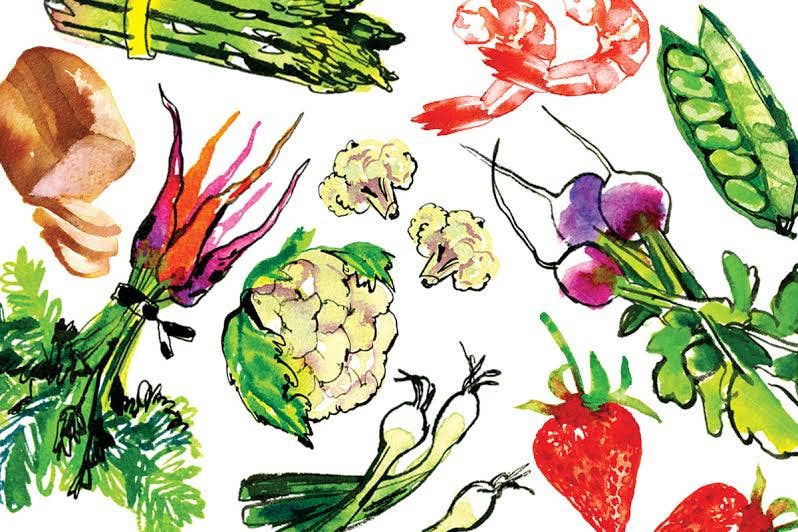
When France was faced with a butter shortage in the 1860s because of a bovine plague, Emperor Louis Napoleon III launched a contest to find a substitute. The prize went to Hippolyte Mege-Mouries, a food chemist from Provence, for a lustrous spread—made from a combination of beef suet, milk, and cows' udder—that he called oleomargarine (the name is derived from the Greek word for pearl). Margarine has changed radically since then: by the early 20th century, a process called hydrogenation (which saturates oil molecules with hydrogen) had made it possible to transform various vegetable oils into a white, semisolid, butterlike spread, to which yellow food colorings could be added by the consumer. Early margarine supporters claimed that it was not only cheaper but also safer than butter, which was given to spoilage and contamination in the days before pasteurization. Later, in the mid-20th-century, after medical research linked heart disease to saturated animal fats like butter, the consumption of margarine surged, exceeding that of butter in 1958. For decades, the American Heart Association counseled the substitution of margarine for butter as part of a heart-healthy diet—until it was confirmed, in the 1990s, that partially hydrogenated fatty acids (called trans fats) like those found in most margarines actually elevated the levels of bad cholesterol. One would think that, by now, butter would have had the last laugh. But the margarine industry, ever adaptable and commercially savvy, has responded by reinventing itself yet again, this time with vegetable oil spreads that are trans fat-free and often blended with other ingredients, such as yogurt and, ironically enough, butter.
Keep Reading
Continue to Next Story










